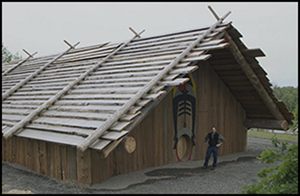Crossref Citations
This article has been cited by the following publications. This list is generated based on data provided by
Crossref.
Parcero-Oubiña, César
and
Nión-Álvarez, Samuel
2021.
Forms of settlement inequality over space. A GIS-based method for measuring differences among settlements.
Journal of Archaeological Science: Reports,
Vol. 35,
Issue. ,
p.
102739.
Thompson, Amy E.
Feinman, Gary M.
Prufer, Keith M.
and
Freeman, Jacob
2021.
Assessing Classic Maya multi-scalar household inequality in southern Belize.
PLOS ONE,
Vol. 16,
Issue. 3,
p.
e0248169.
Thompson, Amy E.
Feinman, Gary M.
Lemly, Marina
and
Prufer, Keith M.
2021.
Inequality, networks, and the financing of Classic Maya political power.
Journal of Archaeological Science,
Vol. 133,
Issue. ,
p.
105441.
Linares Matás, Gonzalo José
2022.
Memory, Agency, and Labour Mobilisation Asymmetries in the Funerary Landscapes of Southeastern Mauritania, West Africa.
SSRN Electronic Journal ,
Beck, Jess
and
Quinn, Colin P.
2022.
Balancing the scales: archaeological approaches to social inequality.
World Archaeology,
Vol. 54,
Issue. 4,
p.
572.
Kay, Kevin
Haddow, Scott
Knüsel, Christopher
Mazzucato, Camilla
Milella, Marco
Veropoulidou, Rena
and
Twiss, Katheryn C.
2022.
No gentry but grave-makers: inequality beyond property accumulation at Neolithic Çatalhöyük.
World Archaeology,
Vol. 54,
Issue. 4,
p.
584.
Schreiber, Tanja
2022.
Architects of change.
Hunter Gatherer Research,
Vol. 8,
Issue. 3-4,
p.
265.
Linares-Matás, Gonzalo J.
2022.
Spatial Organization and Socio-Economic Differentiation at the Dhar Tichitt Center of Dakhlet el Atrouss I (Southeastern Mauritania).
African Archaeological Review,
Vol. 39,
Issue. 2,
p.
167.
Raffield, Ben
Fredengren, Christina
and
Kjellström, Anna
2023.
Narratives of inequality. Towards an archaeology of structural violence in Late Iron Age Scandinavia.
Archaeological Dialogues,
Vol. 30,
Issue. 2,
p.
137.
Linares Matás, Gonzalo J.
2023.
Memory, agency, and labor mobilization in the monumental funerary landscapes of southeastern Mauritania, West Africa.
Journal of Anthropological Archaeology,
Vol. 70,
Issue. ,
p.
101488.
Nión-Álvarez, Samuel
2023.
Analysing Social Change through Domestic and Public Spaces.
Journal of Mediterranean Archaeology,
Vol. 35,
Issue. 2,
p.
253.
Schaefer-Di Maida, Stefanie
Laabs, Julian
Wunderlich, Maria
Hofmann, Robert
Piezonka, Henny
Kreuz, Patric-Alexander
Sabnis, Shikharani
Brozio, Jan Piet
Dickie, Caitriona
and
Furholt, Martin
2024.
Perspectives on Socio-environmental Transformations in Ancient Europe.
p.
257.
Pauliuk, Stefan
2024.
Decent living standards, prosperity, and excessive consumption in the Lorenz curve.
Ecological Economics,
Vol. 220,
Issue. ,
p.
108161.
Kim, Minkoo
2025.
Intragroup social differentiation and household inequality in prehistoric Mumun settlements of Korea.
Journal of Anthropological Archaeology,
Vol. 78,
Issue. ,
p.
101679.
Nishimura, Yoko
2025.
CENTRALIZED URBAN PLANNING AND ECONOMIC SEGREGATION: WEALTH INEQUALITY AT TELL ASMAR AND KHAFAJAH, MESOPOTAMIA.
Iraq,
p.
1.
